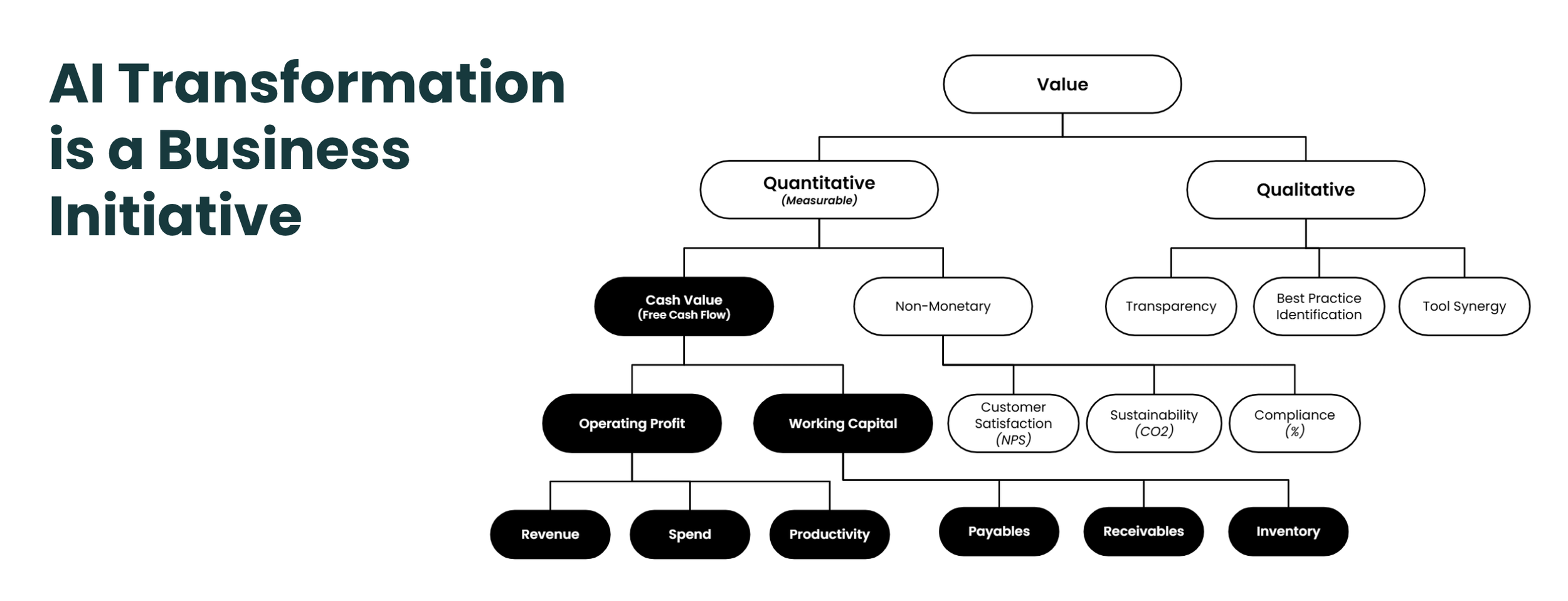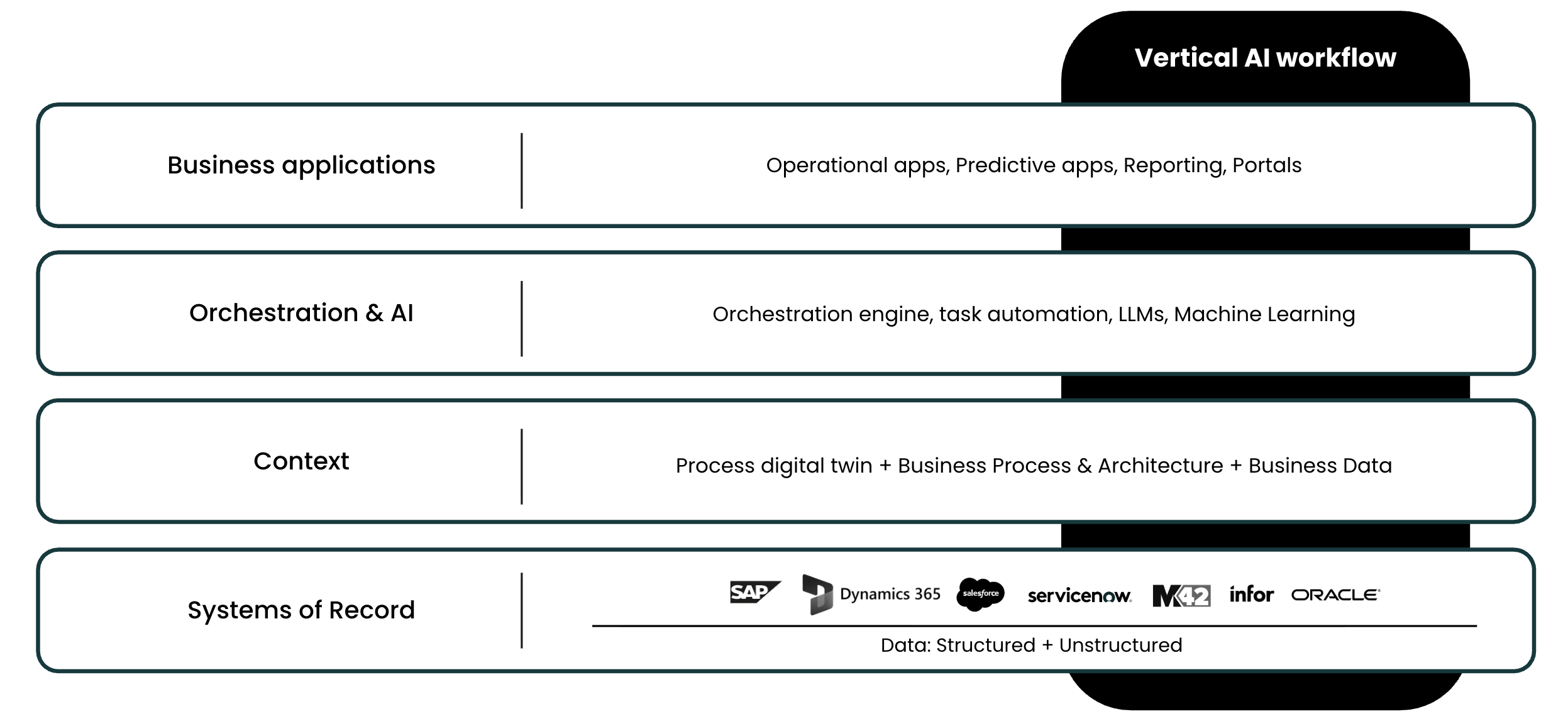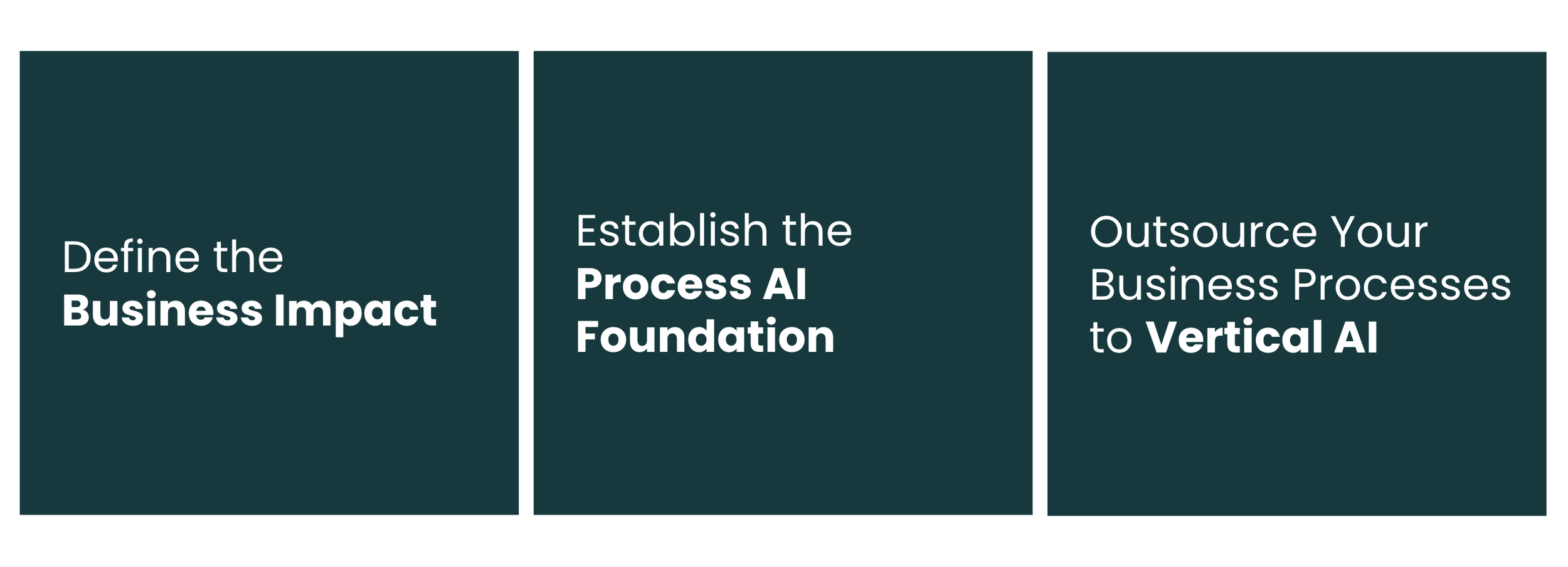AI’s Real P&L Impact Isn’t Personal Productivity, It’s Process Transformation
Every business leader today is inundated with talk of AI. We’ve all seen the demos for personal productivity tools like Microsoft Copilot—powerful applications for summarising documents, drafting emails, and retrieving internal information. These are important, but they are not the whole story.
If you are only focused on this personal productivity stream, you are missing the single biggest opportunity AI presents.
The real, measurable, P&L-moving impact of AI comes from the process productivity stream. This is where AI stops just assisting your employees and starts transforming your core business operations. It’s the difference between helping an employee work faster and re-engineering the work itself.
Based on our experience, the tangible financial impact comes when we shift our focus from IT-driven personal tools to business-driven process automation. This is how you move from simple LLM applications to true business orchestration, where AI enables you to fundamentally rethink your customer experience and internal workflows.
AI is an enabler: P&L impact comes from AI integration to business processes.
But how do you get there? It’s not a single IT project. It’s a business-led transformation that follows three distinct steps.
Step 1: Start with Business Value, Not a Multi-Year Tech Plan
The first and most critical mistake is treating AI as an IT initiative. It is a business initiative.
Many companies begin by launching a massive, multi-year program to map every process and define every process owner. By year three or four, they might start to see value. In a quarterly economy, this is too slow. You need to defend your investments and show results fast.
A better approach is to deliver value through two parallel streams:
Long-Term Capability: Build the foundational technology and skills for the future that enable long-term value creation.
Short-Term Results: Identify and execute on opportunities that deliver new, measurable monetary value every single month. This value must be visible in the P&L.
When you focus on quick, tangible results, you build momentum and create the business case for further investment. This isn’t just an efficiency play; it’s a growth initiative. We’ve seen this deliver massive results for our clients:
Leasegreen: Re-engineering their IoT architecture led to over 80% OPEX savings.
Vaisala: Process optimisation identified a 40% improvement opportunity on service levels.
Valmet: Tackling the incident management process revealed a 15% lead time improvement opportunity.
Step 2: Build the Process AI Foundations
To power this transformation, you need a modern technology stack. This isn’t just about buying an AI platform. It’s about building four interconnected layers.
Systems of Record (The Base): This is your existing landscape—your SAP, ServiceNow, Salesforce, etc. They are often disconnected and contain a mix of structured and unstructured data.
The Context Layer (The Brain): This is the most crucial layer you will build. It’s more than a data lake. It combines your business data with a process digital twin (an intelligent map of how your workflows actually run), your company strategy, and your business architecture. This layer provides your AI with context, enabling it to understand your specific business.
Orchestration & AI Layer (The Motor): This is the engine that drives touchless experiences. It includes task automation, ML models, and LLMs as components in a larger stack. This layer, combined with the Context Layer, enables Vertical AI—agents that understand your business rather than just generic prompts.
Business Applications (The Interface): This is the top layer where your users (employees, managers, or customers) interact with the new, smarter processes for reporting, operations, and prediction.
The goal is to maintain a “clean” philosophy at every stage: a clean core in your systems, clean data in your context layer, a clean flow in your orchestration, and a clean experience for your users.
Step 3: Adopt a “New Workflow” Mentality
You can’t transform a complex, manual, legacy process overnight. A “rip and replace” strategy is doomed to fail.
The key is to introduce a new, automated workflow next to the old one. These two processes will be interconnected, but your goal is to slowly but steadily increase the share of the new, smoother processes. You essentially build an outsourcing mentality, gradually moving work from the old, manual way to the new, automated one.
This expansion is often the most challenging part. It requires a cross-functional “Expansion Team” of process engineers, change managers, data and AI engineers, and source system experts, all working in concert.
Common Hurdles on the AI Transformation Journey
During a recent Q&A, two questions came up that nearly every leader asks.
1. What if our data is a mess? Can we still start?
Absolutely. Saying “data is the problem” is a statement of fact, not a plan of action. It doesn’t lead anywhere.
A better approach is to use the process work to find and quantify the cost of bad data. For example, your process intelligence might reveal a connection between your Salesforce and ERP systems: “When a sales rep doesn’t fill in that specific field in Salesforce, it adds an average of seven days to our order management lead time.”
That is no longer a data problem. That is a business case. You can now go to the sales team with a clear, quantifiable reason to drive change management.
2. What’s the most challenging part of this transformation?
It’s not the technology. The two most difficult challenges are:
Getting the right mandate: This transformation requires bridging silos. The team must have a clear and powerful mandate from leadership to implement changes across departments.
Assembling the right talent: You need a specialist team that combines process engineering, data science, AI, and change management. Finding and uniting these skills is a significant challenge.
The Recipe for Real Business Value
The path to AI-driven business value is clear. It’s not about finding the single best AI tool. It’s about a dedicated, three-part journey:
Start by defining the business impact, focusing on both fast P&L wins and long-term capability.
Build the process AI foundations (especially the Context Layer) to get your data, architecture, and process design right. This is your AI infrastructure.
Adopt a mentality of migrating your old processes to new, improved vertical AI workflows.
This is the recipe for turning the promise of AI into practical, measurable business value.
For more on the topic, listen to a recent keynote by Joona Soratie at the AI & Business Strategies 2025 event.
About the Author
Joona Soratie advocates for a structured, measurable, and data-driven approach to process and organisational improvement. Strategy formulation and implementation, process development and design & bringing clarity to chaos in operational execution are his strong points.





